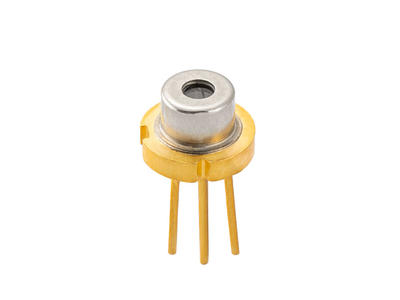

Select your target wavelength at any wavelength between 830 nm and 920 nm. The table below presents typical specifications, available mountings as well as application references & further reading.
|
parameters
|
symbol
|
unit
|
minimum
|
typical
|
maximum
|
|---|---|---|---|---|---|
|
parameters
operating wavelength (at Top, Iop) |
symbol
λop |
unit
nm |
minimum
|
typical
0.1 nm |
maximum
|
|
parameters
optical output power (at λop) |
symbol
Pop |
unit
mW |
minimum
|
typical
10 |
maximum
|
|
parameters
operating current |
symbol
Iop |
unit
mA |
minimum
|
typical
30 |
maximum
|
|
parameters
operating voltage |
symbol
Vop |
unit
V |
minimum
|
typical
3 |
maximum
|
|
parameters
threshold current |
symbol
Ith |
unit
mA |
minimum
15 |
typical
20 |
maximum
30 |
|
parameters
side mode suppression ratio |
symbol
SMSR |
unit
dB |
minimum
|
typical
> 35 |
maximum
|
|
parameters
current tuning coefficient |
symbol
CI |
unit
nm / mA |
minimum
0.004 |
typical
0.007 |
maximum
0.015 |
|
parameters
temperature tuning coefficient |
symbol
CT |
unit
nm / K |
minimum
0.05 |
typical
0.07 |
maximum
0.15 |
|
parameters
operating chip temperature |
symbol
Top |
unit
°C |
minimum
+20 |
typical
+25 |
maximum
+50 |
|
parameters
operating case temperature (non-condensing) |
symbol
TC |
unit
°C |
minimum
-20 |
typical
+25 |
maximum
+50 |
|
parameters
storage temperature (non-condensing) |
symbol
TS |
unit
°C |
minimum
-40 |
typical
+20 |
maximum
+80 |







Lasers in the 830 nm to 920 nm window are used for atom absorption spectroscopy and frequency conversion purposes. There is a Cs D2 transition near 852 nm.
[ 209 ]nanoplus distributed feedback lasers show outstanding spectral, tuning and electrical properties.

Typical spectrum of a nanoplus 852 nm distributed feedback laser diode

Typical mode hop free tuning of a nanoplus 852 nm distributed feedback laser diode

Typical power, current and voltage characteristics of a nanoplus 852 nm distributed feedback laser diode
nanoplus uses a unique and patented technology for DFB laser manufacturing. We apply a lateral metal grating along the ridge waveguide, which is independent of the material system. Read more about our patented distributed feedback technology.
